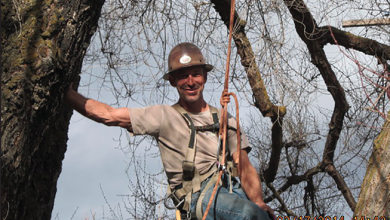Dollars and Cents…
Some trees cost more to “maintain” than others, for a couple of reasons.
Besides the cost of removal, which can be a fairly hefty sum depending on the tree’s size and complexity of taking it down, along with disposing of the brush/wood/debris, what we will talk about here is mostly the cost of pruning various trees.
More of this really hinges on how often a given tree needs to be “gone through,” and this really depends on what kind of tree it is.
Rapid-growing, weak-wooded trees (mostly riparian, or “streamside”) like Willows, Ashes, Poplars, Birches and the like are about the most labor-intensive species over the long haul due to the short interval between pruning that should be done to keep the tree in one piece.
Compared to a healthy native Oak that may only need to have the dead branches removed once or twice every decade or so, a Corkscrew Willow may need attention every year, and that can get a tad spendy over the course of the trees (or your) lifetime!
A big beautiful Willow that highlights a pond may well be worth the added cost however, so diligence plays a big role in deciding what to plant, and where.
Besides riparian trees, native selections seem to be the least problematic trees to own if for no other reason than they have adapted to this climate and growing condition.
Some trees are just vampires when it comes to your bank account, and if planted within your “living space” and allowed to get huge can cost more to maintain than they are actually worth!
A good rule of thumb is: if it not a conifer, the closer it has evolved to a permanent watercourse and does not produce a nut ( think Walnut, Pecan, etc.), the more often it will need some lightening up to minimize breakage.
Conifers that live streamside, or close to water like Coast Redwoods, Baldcypress, etc, can be fast growers, but have a relatively low failure rate and don’t respond well to excessive pruning.
There are very few “plant it and forget it” trees, but there is a wide selection of trees and shrubs that require little maintenance, while being pretty much trouble free for a long time to come.
Most trees won’t come with a warning label from the nursery informing you how much you will regret planting it ten years from now, so ask questions, do a little research, and look before you leap, it could save you thousands in the long run!


